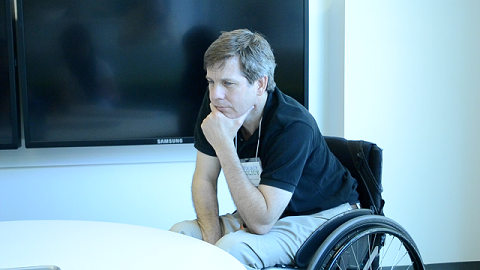By: Chris Mackey
Training laypeople in basic first aid, CPR, and the Heimlich maneuver have become commonplace and proven methods for saving lives in emergencies affecting physical health. Until relatively recently however, discussion of how to help those experiencing mental health crises were not very widespread. Unfortunately, there is still a significant stigma associated with mental illness or poor mental health. In the United States, approximately 44.7 million individuals experience some kind of mental illness,4 and people with disabilities are disproportionately affected. In 2016, 40.3% of adults with disabilities reported having depression in the past, and almost 43% reported having mentally unhealthy days in the past 30 days.(1) Across the U.S. health care and public health systems, providers are integrating physical and mental health service insurance and providers to move more towards parity in coverage and treatments for many conditions such as depression to be highly effective.
There is change occurring at all levels, but, as noted above, a new intervention has come on the scene in recent years called Mental Health First Aid (MHFA). First developed in Australia by Betty Kitchener and Anthony Jorm, MHFA is not even two decades old. Much like physical first aid, the MHFA allows a layperson to help someone through a mental health crisis until professional help arrives. Mental Health First Aid is taught much like typical first aid or CPR in a course that is about eight hours long. The practice of MHFA centers on a five-step strategy in which those providing aid:
• Assess Risk
• Respectfully listen to and support the individual in crisis
• Identify appropriate professional help and other supports
MHFA courses teach participants how to confront a number of situations, from helping someone through a panic attack or a depressive episode, to engaging with someone who might be suicidal or helping someone who has overdosed. Participants are offered opportunities to practice intervention skills with each other or volunteers. Mental Health First Aid is based upon the concepts of resiliency and recovery and that people experiencing mental health crises can get better and keep themselves well with the proper resources.(3)

Mental Health First Aid and People with Disabilities
As with any other intervention, the needs of people with disabilities, both as participants in the course and as those who are helped by MHFA, should be considered. Providers of MHFA training can be prepared to make accommodations for individuals with disabilities such as providing course materials in alternate formats, providing interpreters, or ensuring accessibility of class space. Accessible communication concepts can be included in course content as well. Have individuals with disabilities participate in practice scenarios to enhance the learning of all participants. There has also been recognition of the unique needs of people with intellectual disabilities who are experiencing a mental health crisis. In addition to following the strategies listed above, those providing mental health first aid need to be able to:
• Use repetition as needed
• Reassure the person and keep calm
• Allow extra time for the person to respond
• Break instructions or key ideas down into smaller steps
• Don’t assume an individual can transfer skills from one context to another
• Maintain privacy, and don’t make promises you cannot keep
• Don’t pretend to understand what the person is saying
• Determine if other supports might be needed, such as a case worker or family member, and be prepared to call them (2)
You can learn more about how to be trained in Mental Health First Aid by going to www.mentalhealthfirstaid.org or the National Council on Behavioral Health at www.thenationalcouncil.org.
Published: 7/6/2018
